Tactile. It's a word I find myself thinking of the second I pull a new piece of hardware out of its box. A sense of the tactile, the smooth, the svelte, the well-made, is to me one of the most important things a piece of hardware can have, particularly when it comes to gaming laptops. After all, these are things designed to be carried, touched and interacted with on a daily basis. The way these objects feel is, to me and I believe any future buyer, very important.
Which brings me to the latest range of MSI laptops. I got a chance to have a hands on with these new machines at a press event in good old London-town this week, in which most of the new range was on display for my perusal. There they sat, lit up in neon and displayed proudly on pedestals, and I set about making my way around the room from machine to machine, dutifully nodding at the specs sheets.
RTX 40-series mobile GPUs, the expected mix of Meteor Lake, Raptor Lake and Raptor Lake Refresh Intel chips, fairly substantial SSDs. All good on paper, no doubt.
But as I bounced from one laptop to the next, swishing touchpads, clicking keys, running my fingertips over the frames and holding them in my hands, I couldn't help but notice: None of them feel good.
Perhaps I've been spoiled recently. My most recent laptop reviews have been of the Asus ROG Strix Scar 18, and the Asus ROG Zephyrus G16, two very high end gaming laptops, each with slight issues of their own, primarily that they both have far too powerful a GPU for their cooling systems to adequately provide for.
I criticised the Scar 18 for feeling old-fashioned, despite its huge amounts of gaming power, thanks primarily to a clunky chassis and some overzealous cooling. But having spent some brief time with the new MSI Titan 18 HX, perhaps I judged too harshly.
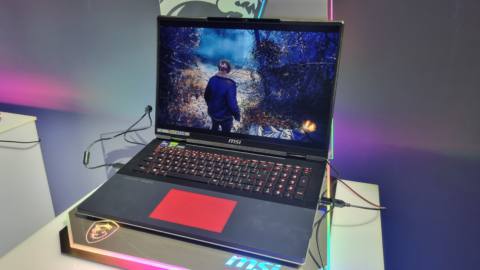
I still found myself wrinkling my nose at an execution of design that feels…ham-fisted.
We were not kind to the previous version, the MSI Titan GT77 HX, and deservedly so. A ludicrously-priced display of excess, a roaring, cantankerous beast of immense power, but also clumsy execution. The new model is better at first appearances, I will admit that, but I still found myself wrinkling my nose at an execution of design that feels…ham-fisted.
Specs-wise, it's an absolute monster. At its top spec, you'll get an Intel Core i9 14900HX, and a mobile RTX 4090, both of which can be “overboosted” to eke out more performance, with a maximum power of 175W TGP for the GPU and 95W for the CPU. As a result, the Titan 18 is so absolutely covered in venting and cooling solutions that, if they were fitted to a lighter model, may well be capable of lifting it from its pedestal and shooting it across the room.
No such worries here though. With a 3.6Kg weight—that's near as makes no difference eight pounds—the MSI Titan 18 is destined to stay exactly where it is. Of course, nobody would ever say a machine of such power and heft is destined to be portable, and it would be unfair to assume that a top of the line 18-inch beast with such powerful components would be designed to be slim.
Still, the substantial rear protrusion, the ludicrously chunky bottom deck, the vents that you could lose your car keys in (I'm being hyperbolic, but it's not that far off). It feels like a laptop from another era, no matter the cutting-edge hardware inside. It's worth mentioning the starting MSRP for this hulking machine was given as £4,699.
That's a truly gigantic amount of money for any gaming PC, but especially for a bottom of the spec model. Searching through the MSI store, I found a 64GB DDR5 model for, wait for it, $9,000.
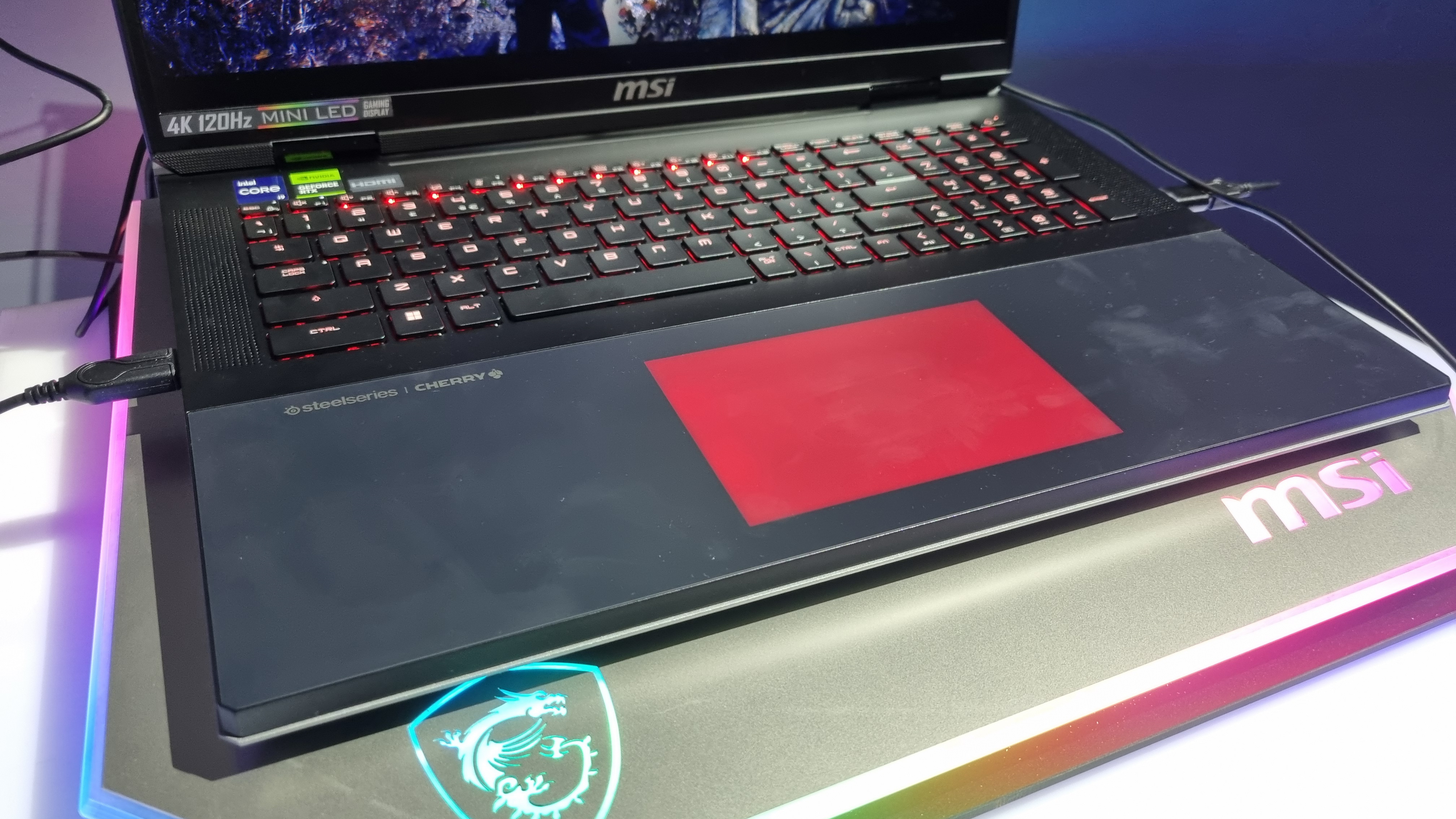
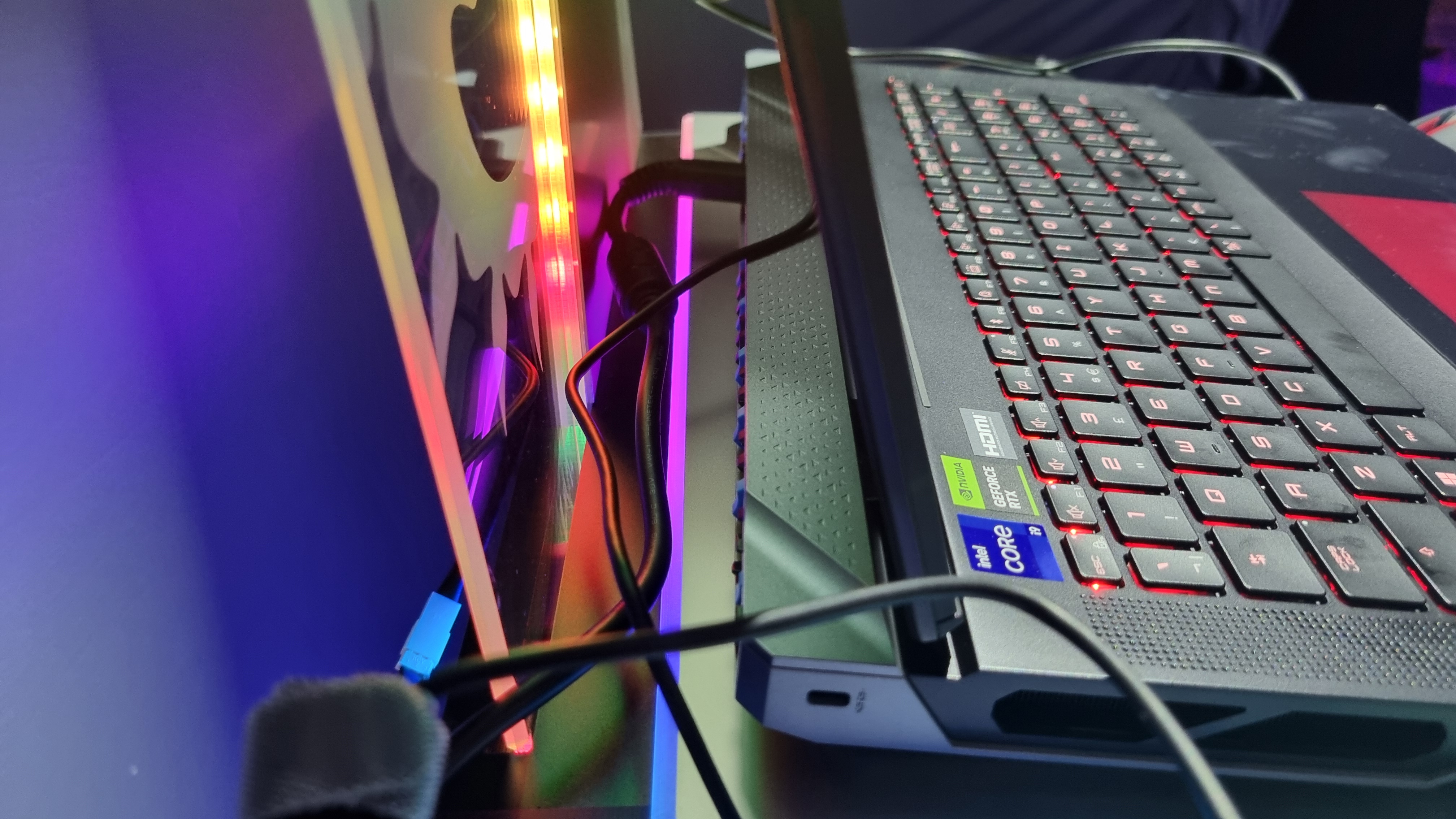
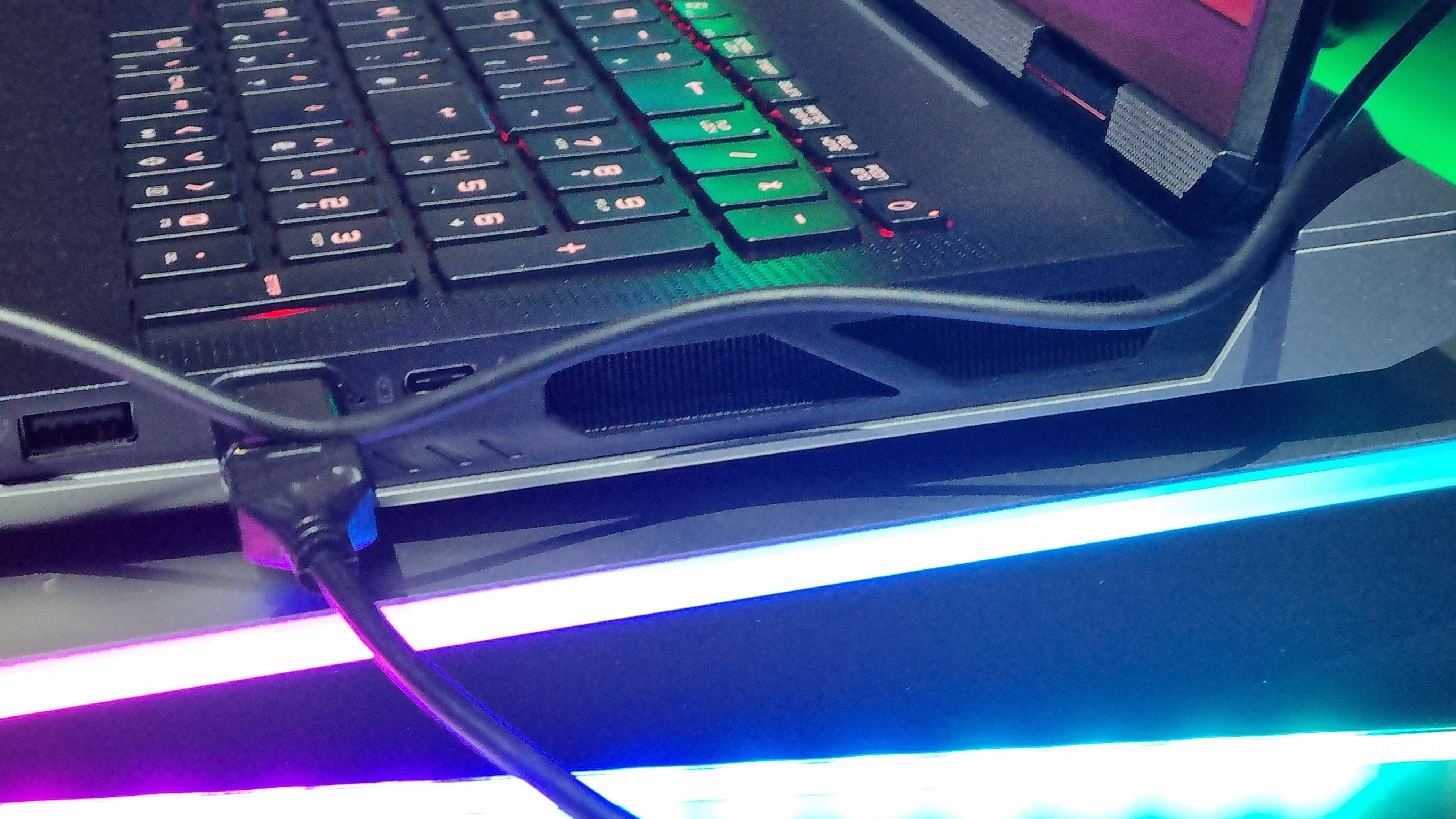
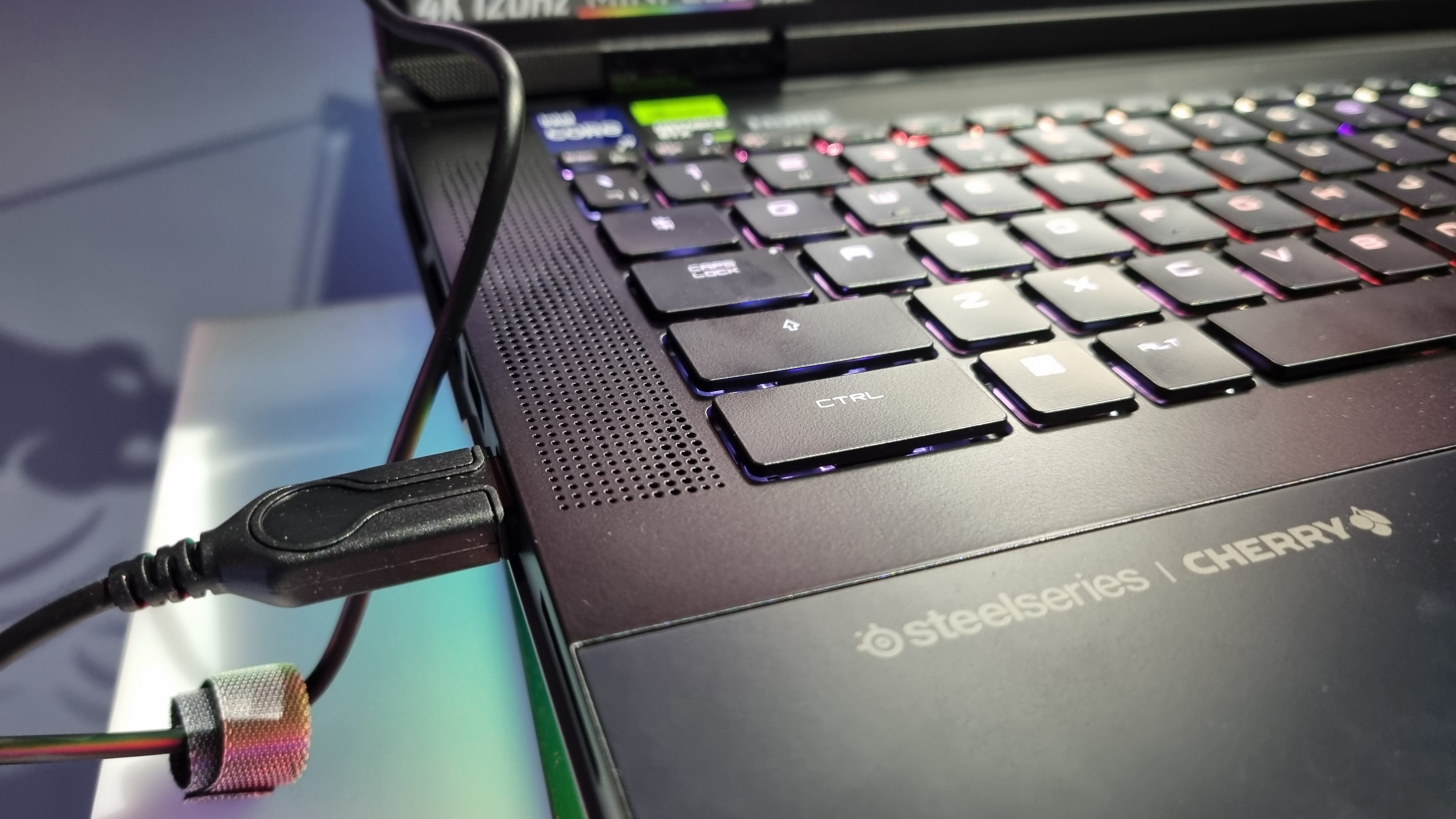
Then there's the touchpad. It's RGB, which is nice on paper, and seamless, which is…fine. However, the neon glow it's capable of producing emerges from underneath murky translucent plastic, like the front of those cheap ring-binder notepads you used at school, making the effect look cheap, and feel worse. Keyboard-wise it makes use of Cherry MX switches, which again sounds great, but the keys protrude substantially from the chassis and feel plastic-y, clicky in the wrong ways, and simply clumsy to the touch.
Speaking of keyboards, I spent some time performing laps of the, err, laptops on display, trying to find one that I liked. See, I'm one of those strange people that actually likes a low-profile laptop keyboard, or mechanical clicky keyboards, or indeed any keeb that feels well-made and positive to the touch.
All of them had issues. From mushy, poppy membrane models to overly-clicky, slightly crunchy mechanical chonks, I couldn't find one I quite got on with, and to me this sums up the issue rather neatly.
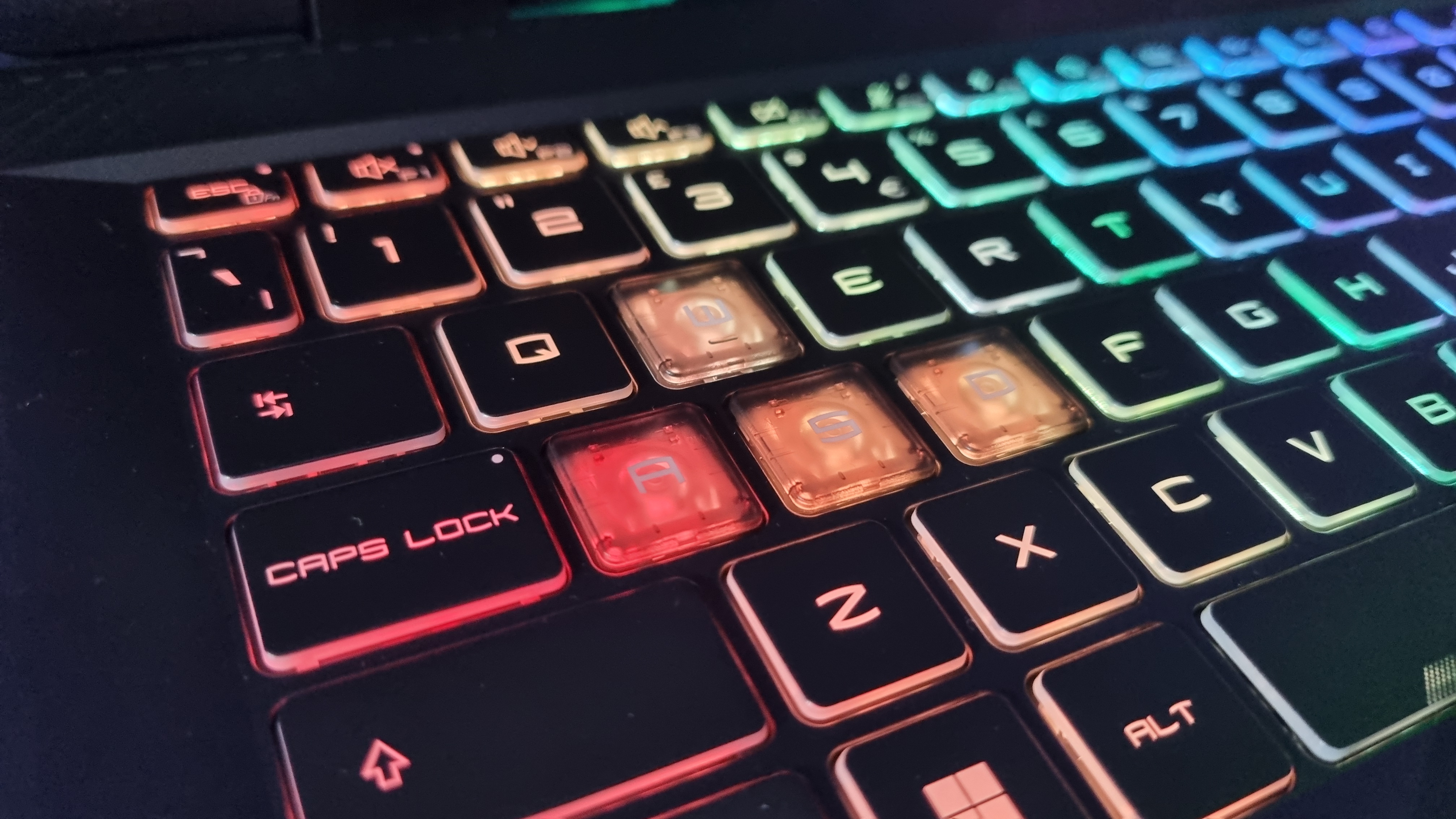

It's all very well cramming a lot of powerful hardware into a laptop frame, but you must pay attention to the little details, the day-to-day usage. You need to engender the feeling that if you've spent thousands of bucks, pounds, or your currency of choice on a new laptop, you want it to feel like you've got your money's worth. And here, beyond looking at the spec sheets, there's little to tell you, on a physical level, where all that money went.
Then there's the plastics. It's not that these laptops are entirely bad when it comes to tactile choices, you understand. Occasionally you find a deck, or a screen-hinge, or an outer-lid that actually feels rather pleasant. However, it's the strange mix of materials that makes you feel, in some cases, like they were put together with very different parts.
The worst offender, I'm sorry to say, was the MSI Cyborg 14 A13V. Now, before we get started, I am well aware that this system is on the budget end of the gaming laptop spectrum. With up to an Intel Core i7 13620H processor and an RTX 4060 GPU, no-one is suggesting that this is supposed to be a premium machine, and it's clearly designed to deliver some decent gaming performance for a low MSRP, which was given as a starting price of £1,199.
This though. This is unacceptable:

Yep, that's a completely different plastic for the screen surround compared to the rest of the machine. Not just any plastic, either. A rough, sandpaper-like, utilitarian kind, the sort that makes your back tingle when you scrape a fingernail across it. I know, MSI, I know. It's cheap for a reason. The price has been kept low, so that even gamers on a budget can have a reasonably performant machine for a relatively low amount of money.
But in all honesty, how much more would it cost to make the plastic used in the surround match the rest of the display?
I'm all for cheap and cheerful, I really am. But in this case, I honestly think potential buyers would spend just a little bit more to get a machine that feels like it was made of components that came off the same factory line.
A quick concession: I did enjoy the screens. I've been a fan of MSI displays, and I actually use a 32-inch IPS MSI screen as my main monitor, and in fact am staring at it as it looks at me, vaguely disappointed, while I write this piece. The 4K Mini-LED unit on the Titan 18 actually looked great, and even some of the glossy IPS panels on the lower-priced models had a vibrancy and contrast that made me step back a little.
Lovely looking things, and given that this is what you're going to be spending most of your time gazing at, an excellent shout for laptop design. Top marks there, and honestly so.
I just wish that more time was spent on the details around them, to create a machine that I actually want to take home with me.
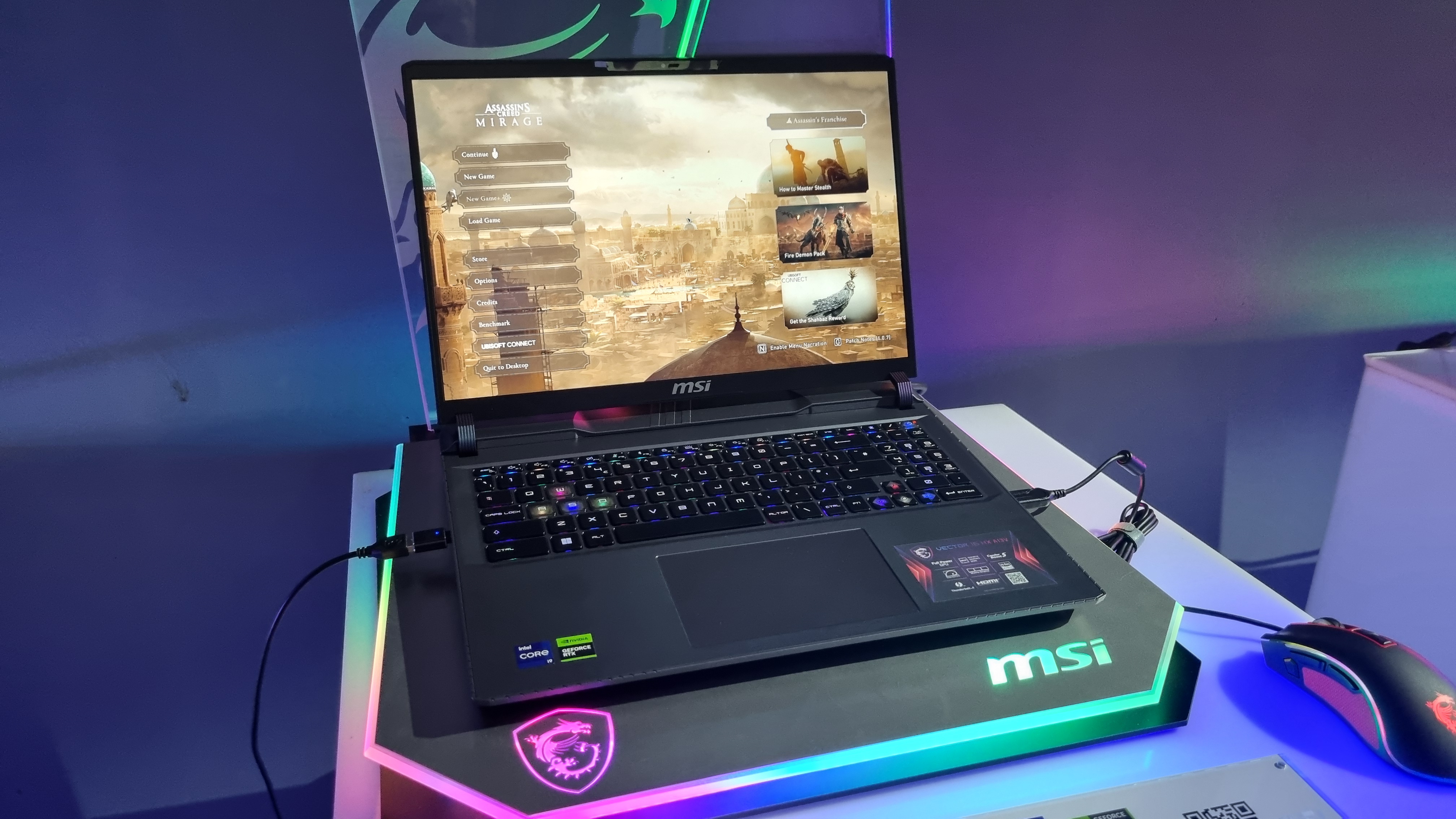

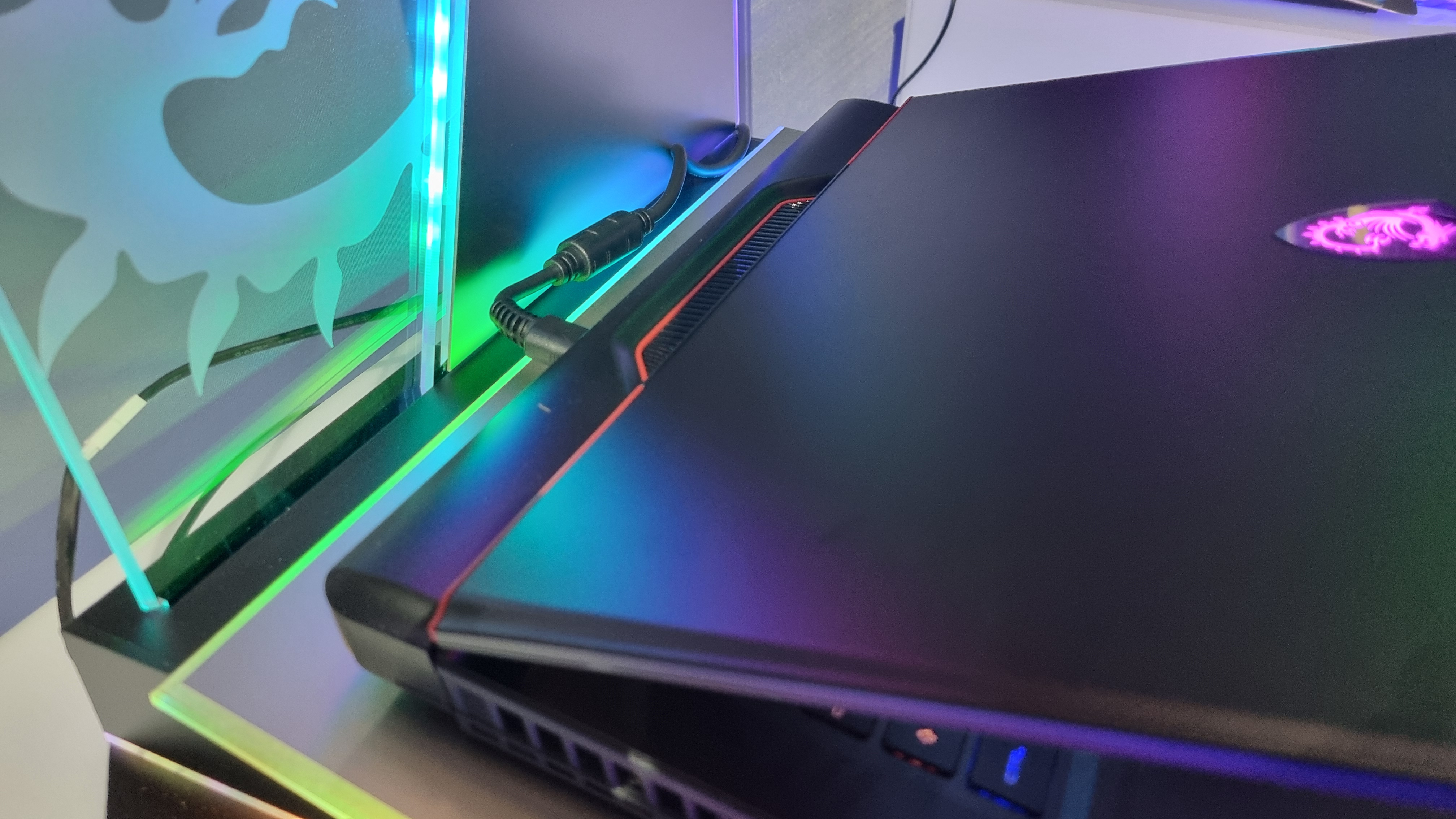
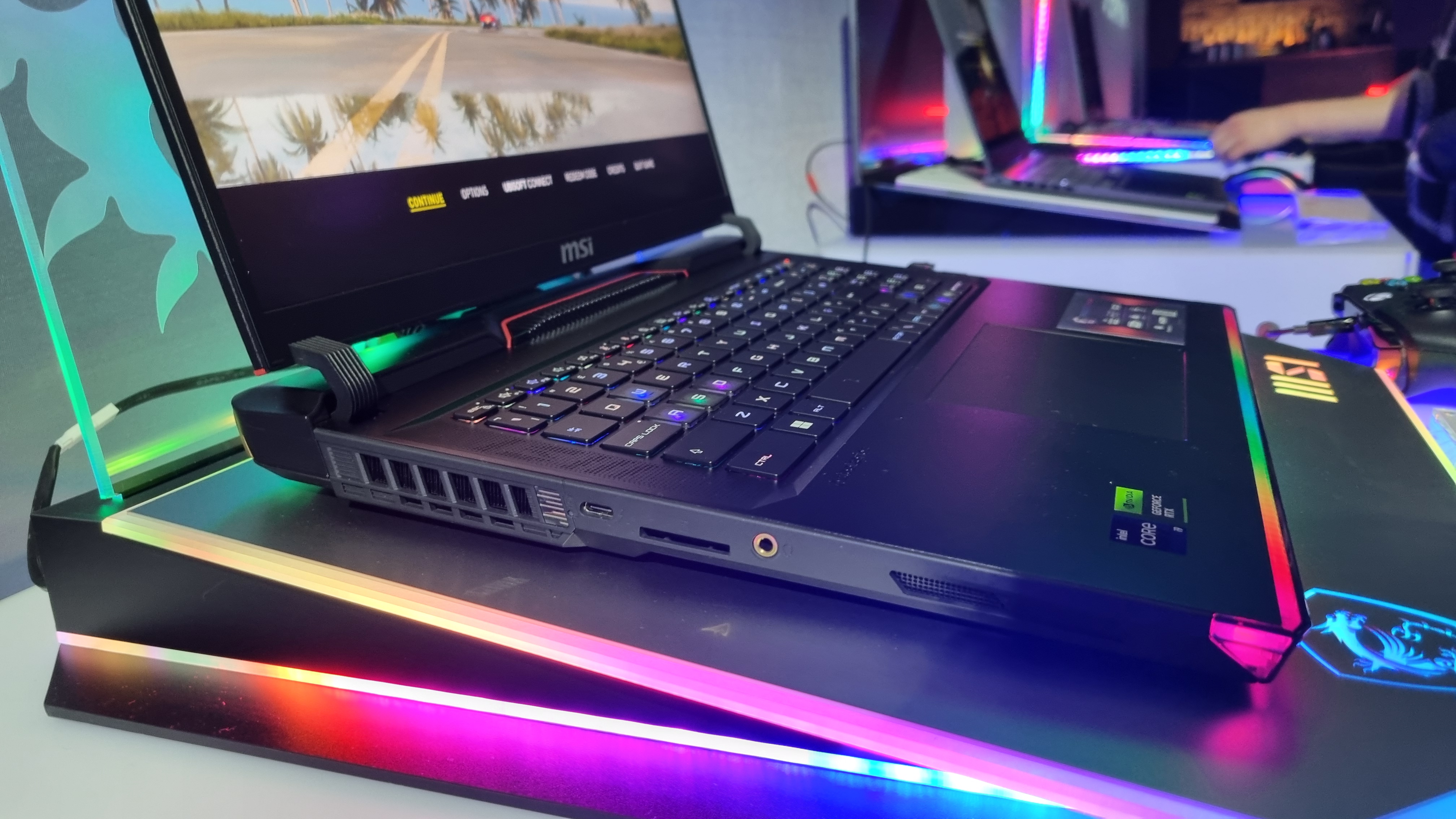

Look, I'll level with you. I'd much rather report that I had a lovely day, everyone was very pleasant, and the new MSI laptops look grand. While the first two of those points are absolutely true, I can't in good conscience stand by the last. The spec sheets look good, the range is well-placed, and performance-wise seems like they may well put forward some decent numbers.
But for me, the tactile feel is just as important. Feel is what I'm looking for. If I'm using a machine on a daily basis, I want it to wow me, not just with what it's capable of but how it looks, how it presents, how it sits on my lap, my desk, or in my hands.
And here, while I quite like the sound of the MSI range, I can't in good conscience say that I felt anything that made me desire these lappies, no matter how capable the hardware underneath.

Best gaming PC: The top pre-built machines.
Best gaming laptop: Great devices for mobile gaming.
Luckily, this seems like a problem that can be easily fixed. Materials, ergonomics, overall designs, there are plenty of other manufacturers on the market making great machines that nail these details with aplomb. Paragons of the way we want laptops to be moving forward.
I fell slightly in love with the Asus Zephryus G16, and while I had to lower the score based mainly on the fact I was sent one with a silly-large GPU that was unsuitable for its slender frame, in terms of design, materials and daily usage it was a dream.
Our Jacob tested a similarly designed Asus ROG Zephyrus G14 with a much more sensible configuration, and rightly came away extremely impressed. It's a nice thing. A beautiful thing. A thing you want to take home with you at the end of the day.
Take a look at the competition, MSI, and up your game. I honestly don't think it would take much to elevate these laptops from the disappointing to the desirable, if only more attention was paid to the packaging overall.
The devil's in the details, they always say. The dragon could do with bearing that in mind.






